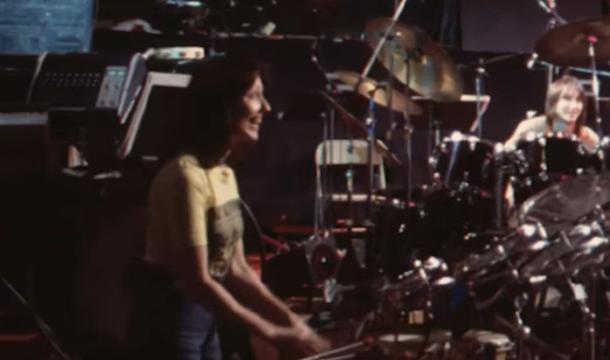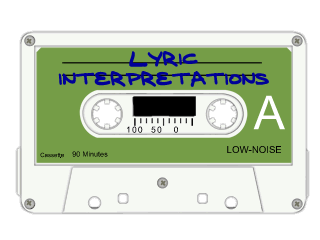Ruth Underwood and the “Zappa sound”

If you appreciate music made on the xylophone, marimba, vibraphone, and other tonal percussive instrumentation, then you should know the name Ruth Underwood. She played as part of the Mothers of Invention years ‘68-’77, as well as on-again / off-again collabs with Zappa alumni since. But perhaps it’s best to let Ruth Underwood introduce herself, and how she played Zappa’s music.
Ruth Underwood was the backbone of the Zappa sound
In the video there, Underwood explains the unique chord structure that produces the pronounced but slightly off-kilter sound of some of Zappa’s most famous tunes. She pecks out a bar of “The Idiot Bastard Son” before showing us the complex, wonderfully flowing tune from the “Rollo Interior interlude” amid “St. Alfonzo's Pancake Breakfast.” Underwood played on more than 30 Zappa albums, pretty much every time you hear a xylophone or other percussive instrument, which was all the time.
Try to imagine an album like, say, my very favorite in the world, Piquantique from the Beat the Boots label, without Underwood’s percussion section. That entire stage performance has Ruth hammering away throughout “Dupree’s Paradise” and “Father O’Blivion,” neither of them junior-league tracks.
How Ruth Underwood and Frank Zappa Met
As if being such a long-standing core member of Zappa’s band wasn’t credential enough, Underwood was also a graduate of Ithaca and Julliard, a classically trained musician playing at the Garrick Theater in New York City – at the age of 21, mind you – in 1967 when Zappa’s band also had an engagement and the two’s paths crossed. How’s that for a heady discovery story?
But here she is again to tell you herself. Not only was she at Julliard, but she also describes the confrontation between herself and an officer of the school, who told her off for playing music (a Zappa piece she was practicing) that was so different from typical Julliard fair. That gave her the epiphany that directed her away from a life of being orchestra member #57 (triangle) and join Zappa’s indescribable jazz-fusion cacaphony.
Here she is in documentary again, talking about how she feels a sense of belonging with Zappa’s pieces:
Zappa himself railed against conformity
Anybody with a copy of the Official Frank Zappa Book – lord knows I throw mine around a lot on here – can tell you that Zappa railed against near-*everything*, but stuffy thinking in the classical training of music students was just pet peave #95 with him. Really, it’s easy to mis-read him as arrogant if you just read him straight through. When you hear Zappa speak in interviews, he was actually a humble person whose standards were born of stratospheric levels of talent.
So, it kinda begs the question, were Zappa and Underwood kindred souls, or did they perhaps have a crush on each other? Certainly, you could argue that Zappa’s professional standards were justification enough for their long-term co-careers. Good musicians who made his cut were hard to find. In any case, they each had their own marriages (notably Ruth to keyboardist Ian Underwood, also in the Zappa line-up) and home life and seemed pretty settled with their respective lots.
Or you could just as easily project your crush onto Zappa, witnessing him onstage with Underwood for a performance of “Apostrophe”:
You can see Underwood’s sheer love of what she’s doing with her animated performance. Making faces on cue to the audience at specific notes, jamming along with the beat during the breaks, and doing all this in a bikini top, no less.
That was your Zappa-focus band member for the day. Perhaps we’ll focus on other notable Mothers in posts to come.

 A new era for Millennial favorite, Linkin Park
A new era for Millennial favorite, Linkin Park  Anime to watch for the soundtracks… and other reason...
Anime to watch for the soundtracks… and other reason... .jpg) Dolly, we need you
Dolly, we need you  The Stranger Things Effect: How new media is drawing...
The Stranger Things Effect: How new media is drawing...  The most underrated soundtrack of the early 2000s
The most underrated soundtrack of the early 2000s  Buy the Soundtrack, Skip the Movie: Brainscan (1994)
Buy the Soundtrack, Skip the Movie: Brainscan (1994)  Let’s Go to the Hop - Ignore That Door’s Four Bunnie...
Let’s Go to the Hop - Ignore That Door’s Four Bunnie...  Forgotten Weird Music Videos of the Ancient 80s | vol 3
Forgotten Weird Music Videos of the Ancient 80s | vol 3  Forgotten Weird Music Videos of the Ancient 80s | vol 2
Forgotten Weird Music Videos of the Ancient 80s | vol 2  Forgotten Weird Music Videos of the Ancient 80s | vol 1
Forgotten Weird Music Videos of the Ancient 80s | vol 1  Let’s Chase Taylor Swift Rumors
Let’s Chase Taylor Swift Rumors  When the Beatles Touched Off a Movie War
When the Beatles Touched Off a Movie War  When Mike Bloomfield Composed a Soundtrack For Andy ...
When Mike Bloomfield Composed a Soundtrack For Andy ...  Yet Another List of Bad Song Covers
Yet Another List of Bad Song Covers  Why Does Everybody Pick On Liberace?
Why Does Everybody Pick On Liberace?  Trainspotting Soundtrack Revisited : One of the Best...
Trainspotting Soundtrack Revisited : One of the Best...  Nicki Minaj and Megan Thee Stallion: Bringing Back t...
Nicki Minaj and Megan Thee Stallion: Bringing Back t...  Quirky Songs About Los Angeles
Quirky Songs About Los Angeles  Penguin Pete’s Obligatory Penguin Cafe Orchestra Post
Penguin Pete’s Obligatory Penguin Cafe Orchestra Post  Heart | How Bad Are Those Animals?
Heart | How Bad Are Those Animals?  That Time Ronnie James Dio Saved Black Sabbath’s Bacon
That Time Ronnie James Dio Saved Black Sabbath’s Bacon  What is a Left Hand Path? - Entombed and Swedish Dea...
What is a Left Hand Path? - Entombed and Swedish Dea...  Song Analysis Corner: Convoy (1975)
Song Analysis Corner: Convoy (1975)  What’s Up With Margaritaville?
What’s Up With Margaritaville?  This Album Links Duran Duran, Andy Warhol, and Kurt ...
This Album Links Duran Duran, Andy Warhol, and Kurt ...  Your Back-To-School Playlist
Your Back-To-School Playlist  Cucumber Castle | the other Bee Gees Movie
Cucumber Castle | the other Bee Gees Movie  Danny Elfman Scores New Film; Other Movie Weirdness!
Danny Elfman Scores New Film; Other Movie Weirdness!  Sparks Is Not Crying in Their Latte
Sparks Is Not Crying in Their Latte  Travis Scott : Rapper, Cannabis Entrepreneur, Filmmaker
Travis Scott : Rapper, Cannabis Entrepreneur, Filmmaker  Anders Runestad – Author and Music Blogger
Anders Runestad – Author and Music Blogger  What If They Really ARE Giants?
What If They Really ARE Giants?  Prince’s Underrated Under the Cherry Moon
Prince’s Underrated Under the Cherry Moon  Six Degrees of Blondie
Six Degrees of Blondie  Six Degrees of: Adam and the Ants
Six Degrees of: Adam and the Ants  Discovering Beat-Club | Vintage West German Music Show
Discovering Beat-Club | Vintage West German Music Show  Eurovision Contest Winners part 2
Eurovision Contest Winners part 2  Song Analysis Corner: Snoopy vs. the Red Baron | The...
Song Analysis Corner: Snoopy vs. the Red Baron | The...  Eurovision Contest Winners part 1
Eurovision Contest Winners part 1  KISS SUXX!
KISS SUXX!  You Haven’t Met Your Last Reefer Man
You Haven’t Met Your Last Reefer Man  Ruth Underwood and the “Zappa sound”
Ruth Underwood and the “Zappa sound”  Catchy Commercial Earworms | vol 2
Catchy Commercial Earworms | vol 2  Song Analysis Corner: “Trouble Every Day” | Frank Zappa
Song Analysis Corner: “Trouble Every Day” | Frank Zappa  Blues Music For Your Great Recession
Blues Music For Your Great Recession  We Can Fix America If We Just Bring Back Schoolhouse...
We Can Fix America If We Just Bring Back Schoolhouse...  Song Analysis Corner: Istanbul (Not Constantinople)
Song Analysis Corner: Istanbul (Not Constantinople)  Music To Shoot Down UFOs To
Music To Shoot Down UFOs To  Are You Ready For AI Music?
Are You Ready For AI Music?  How Dreary Was 1970s Adult Contemporary?
How Dreary Was 1970s Adult Contemporary?  I Just Called To Say Stevie Wonder's Song Deserved a...
I Just Called To Say Stevie Wonder's Song Deserved a...  "Knock On Wood" | The Real Song To Remember From Cas...
"Knock On Wood" | The Real Song To Remember From Cas...  Dr. Dre's Not Gonna Take This Anymore
Dr. Dre's Not Gonna Take This Anymore  Apache - The Shadows | A Surf-Rock Safari
Apache - The Shadows | A Surf-Rock Safari  New Year : New Music Artists You (Probably) Haven't ...
New Year : New Music Artists You (Probably) Haven't ...  Song Odyssey | I Put A Spell on You
Song Odyssey | I Put A Spell on You  KMart and S.S. Kresge | Music Mystery?
KMart and S.S. Kresge | Music Mystery?  Did I Ever Introduce You To Horrorpunk?
Did I Ever Introduce You To Horrorpunk?  Song Analysis Corner : The Coffee Song
Song Analysis Corner : The Coffee Song  Duran Duran Finally Got Inducted
Duran Duran Finally Got Inducted 